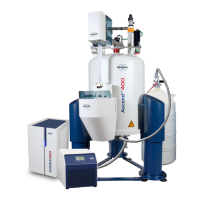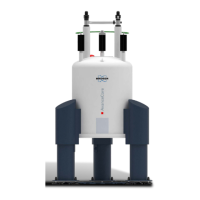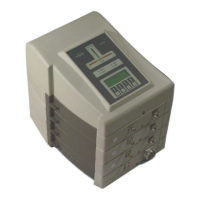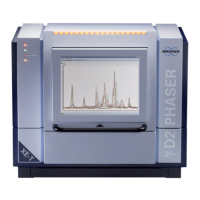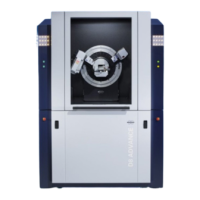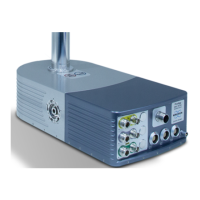Magnet Safety
H171764_6_001 29 / 48
4.6.1 Ventilation During Normal Operation
Superconducting magnets use liquid nitrogen and liquid helium as cooling agents, and a boil-
off of liquid cryogens is expected during the normal operation of the magnet system, as
follows:
• Normal boil-off of liquids contained in the magnet based on the given boil-off
specifications.
• Boil-off of cryogens during the regular refills with liquid nitrogen and liquid helium.
The gases are nontoxic and completely harmless as long as adequate ventilation is provided
to avoid suffocation. Rules for ventilation during normal operation include but are not limited
to:
• The NMR magnet system should never be in an airtight room. The magnet location should
be selected such that the door and the ventilation can be easily reached from all places in
the room.
• Room layout, ceiling clearance and magnet height should be such that an easy transfer of
liquid nitrogen and helium is possible. This will considerably reduce the risk of accidents.
4.6.2 Emergency Ventilation During Magnet Installation or a Quench
A separate emergency ventilation system should be provided to prevent oxygen depletion in
case of a quench or during the magnet installation.
During a quench, an extremely large quantity of helium gas (i.e. 43 to 595 m
3
depending on
the magnet type) is produced within a short time.
During the installation and cooling of superconducting magnets, and under certain conditions,
large volumes of nitrogen or helium gases may be generated.
Although these gases are inert, if generated in large enough quantities, they can create
dangerous circumstances if they displace the oxygen in the room.
4.6.3 Emergency Exhaust
There are various types of emergency exhaust that can be implemented to avoid oxygen
depletion during a quench or during the installation of the magnet system. These include, but
are not limited to:
Active Exhaust
This solution is based on a motorized fan, vents, and exhaust duct pipe that is not connected
to the magnet itself. The exhaust should be activated both automatically by an O2 sensor, as
well as manually by a switch in the room. The latter is needed during magnet installation and
regular refills to prevent cryogen build-up in the room by evacuating them faster than the
regular HVAC (Heating Ventilation Air Conditioning) system.
Passive Exhaust
This solution is based on lovers in the ceiling that open by the gas due to the overpressure of
helium gas during a quench.

